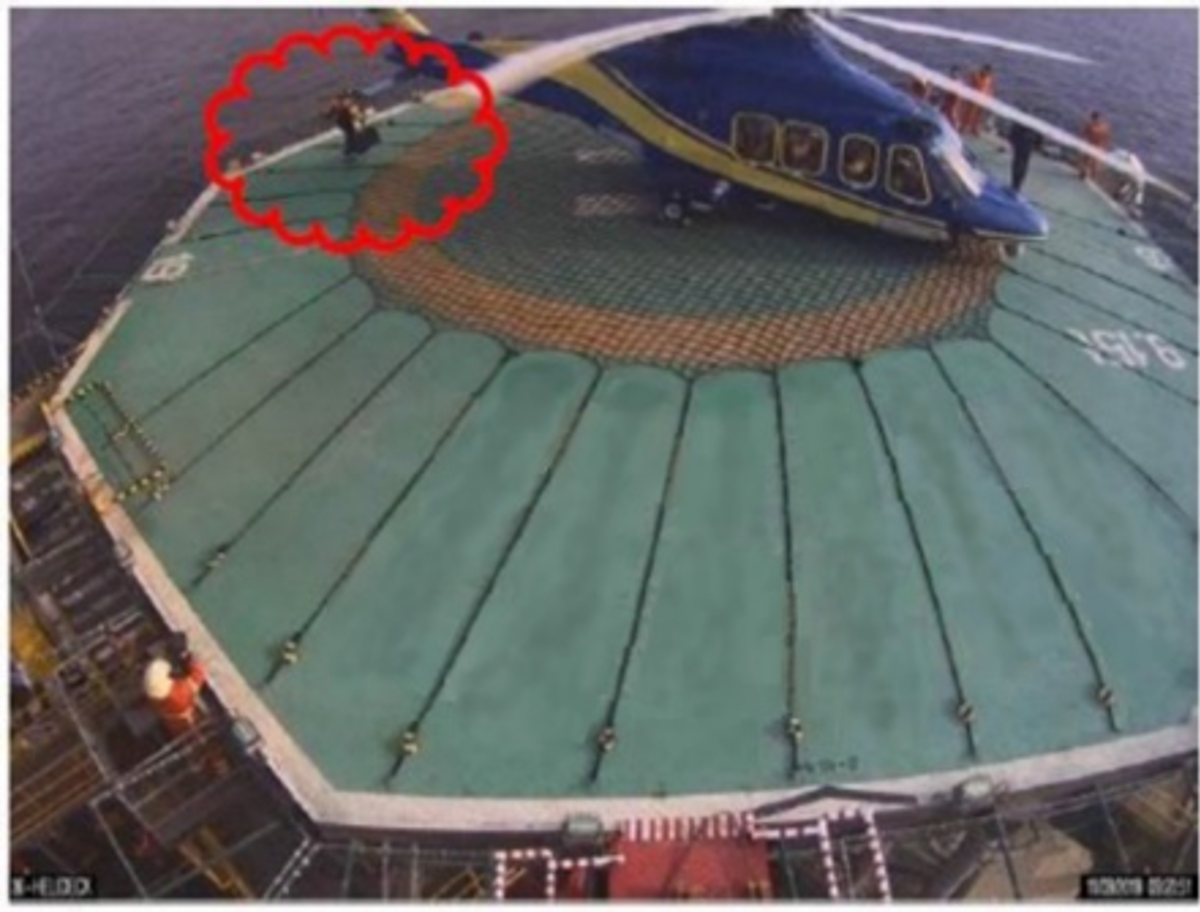Near miss during helicopter operations
- Safety Flash
- Published on 30 January 2020
- Generated on 11 December 2025
- IMCA SF 03/20
- 3 minute read
Jump to:
What happened?
During helicopter flight boarding, a member of the crew crossed a hard barrier (stairway access chain) with a restriction sign and approached the flight deck from the aft stairway while boarding activities were ongoing on the forward side.
A member of the helicopter emergency response team – an offshore helideck assistant – attempted to intervene by shouting. The warning did not prevent the crew member from approaching the helicopter from the uncontrolled or prohibited direction and from passing beneath the tail rotor blades.
The HLO was controlling boarding from the forward stairway. From CCTV records, it is estimated that distance between the crew member and the rotor tail was approximately 1.5-2 m. No injury occurred during the event.

What went wrong? What were the causes?
- The crew member did not follow safety rules on helideck (i.e. to NOT pass under the tail rotor).
- The HLO lost control of situation.
- Employee removed a safety barrier (chain).
- There was no signalman available to guard the safety barrier (chain).
- Employee was not escorted when ascending the stairs.
Some contributory factors identified by our Member were:
- The helideck readiness check was performed in an ineffective way.
- The helideck check list did not include a line item concerning how to correctly fold the foldable handrails in advance of helicopter landing and take-off. During the investigation, the foldable handrails had been found folded in the wrong direction;
- Passenger embarkation had been delayed by handover.
What lessons were learned?
- Human Errors and Safety Barriers: human error can reduce or even eliminate the effectiveness of a physical barrier (chain, handrail, safety tape, etc). Human error occurs when an incorrect action takes place, but the person involved believes the action to be correct. A human error involves an incorrect judgement.
- In this specific case the passenger demonstrated full awareness of the safety barrier rules; however, the misleading evaluation of being left behind by other passengers allowed the passenger to make the mistake of removing the barrier. He was convinced that he was authorised to reach the helideck as part of the boarding passengers and the removal of the barrier was not thus perceived by the individual as a safety violation.
- The human factor should always be considered during the design of safety systems.
Actions
- Changes to risk assessments, procedures and safety management systems (SMS) are omitted as understood.
- During helicopter briefing, ensure passengers understand reasons for following the rules and the consequences for deliberately not following them.
- Improve clarity on access route to use (e.g. flashing lights or directional signs) to identify the access in use for helicopter embarkation and provide dedicated embarkation/disembarkation facilities for personnel and baggage.
Related Safety Flashes
-
IMCA SF 11/19
17 May 2019
-
-
IMCA SF 05/19
20 March 2019
-
IMCA Safety Flashes summarise key safety matters and incidents, allowing lessons to be more easily learnt for the benefit of the entire offshore industry.
The effectiveness of the IMCA Safety Flash system depends on the industry sharing information and so avoiding repeat incidents. Incidents are classified according to IOGP's Life Saving Rules.
All information is anonymised or sanitised, as appropriate, and warnings for graphic content included where possible.
IMCA makes every effort to ensure both the accuracy and reliability of the information shared, but is not be liable for any guidance and/or recommendation and/or statement herein contained.
The information contained in this document does not fulfil or replace any individual's or Member's legal, regulatory or other duties or obligations in respect of their operations. Individuals and Members remain solely responsible for the safe, lawful and proper conduct of their operations.
Share your safety incidents with IMCA online. Sign-up to receive Safety Flashes straight to your email.